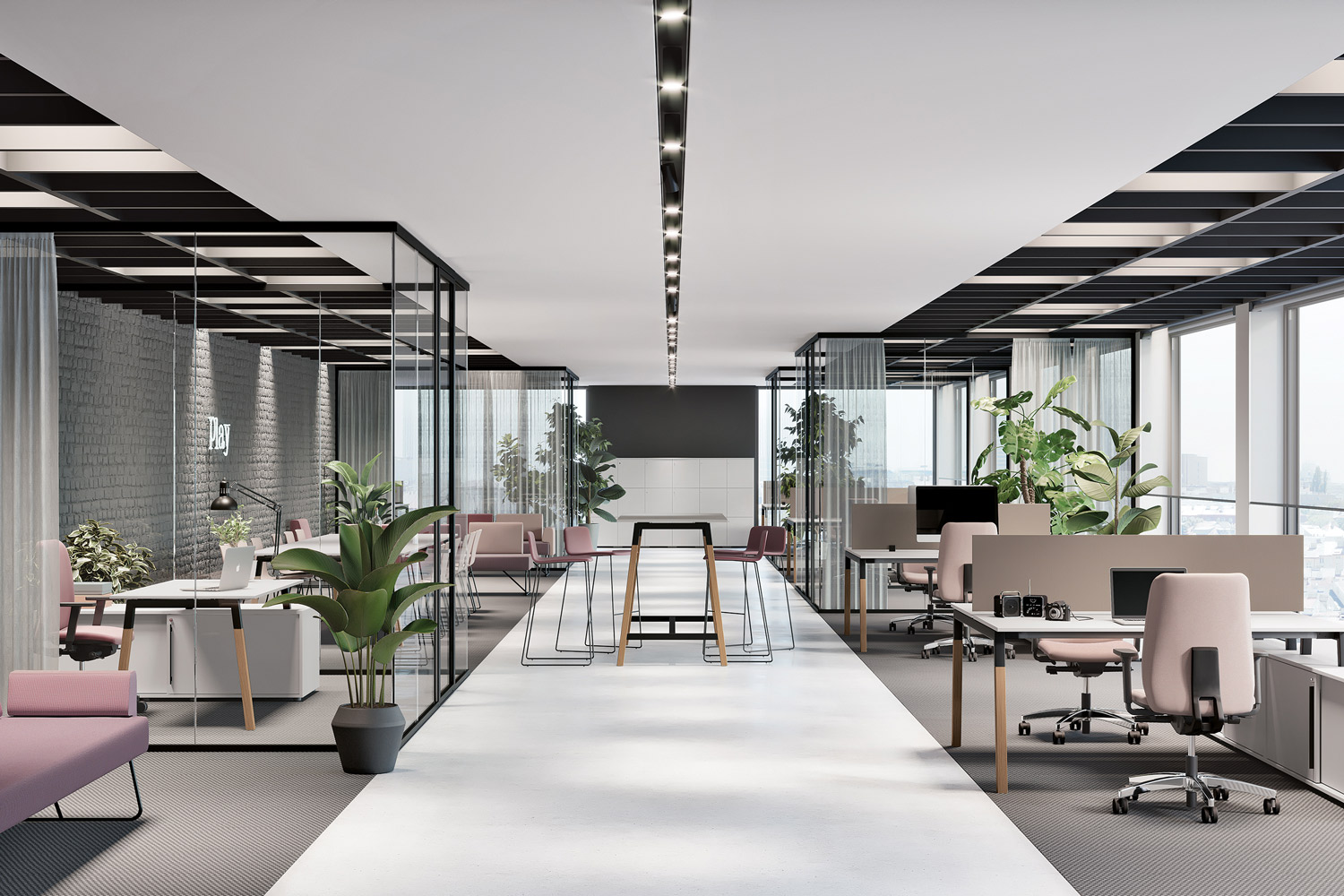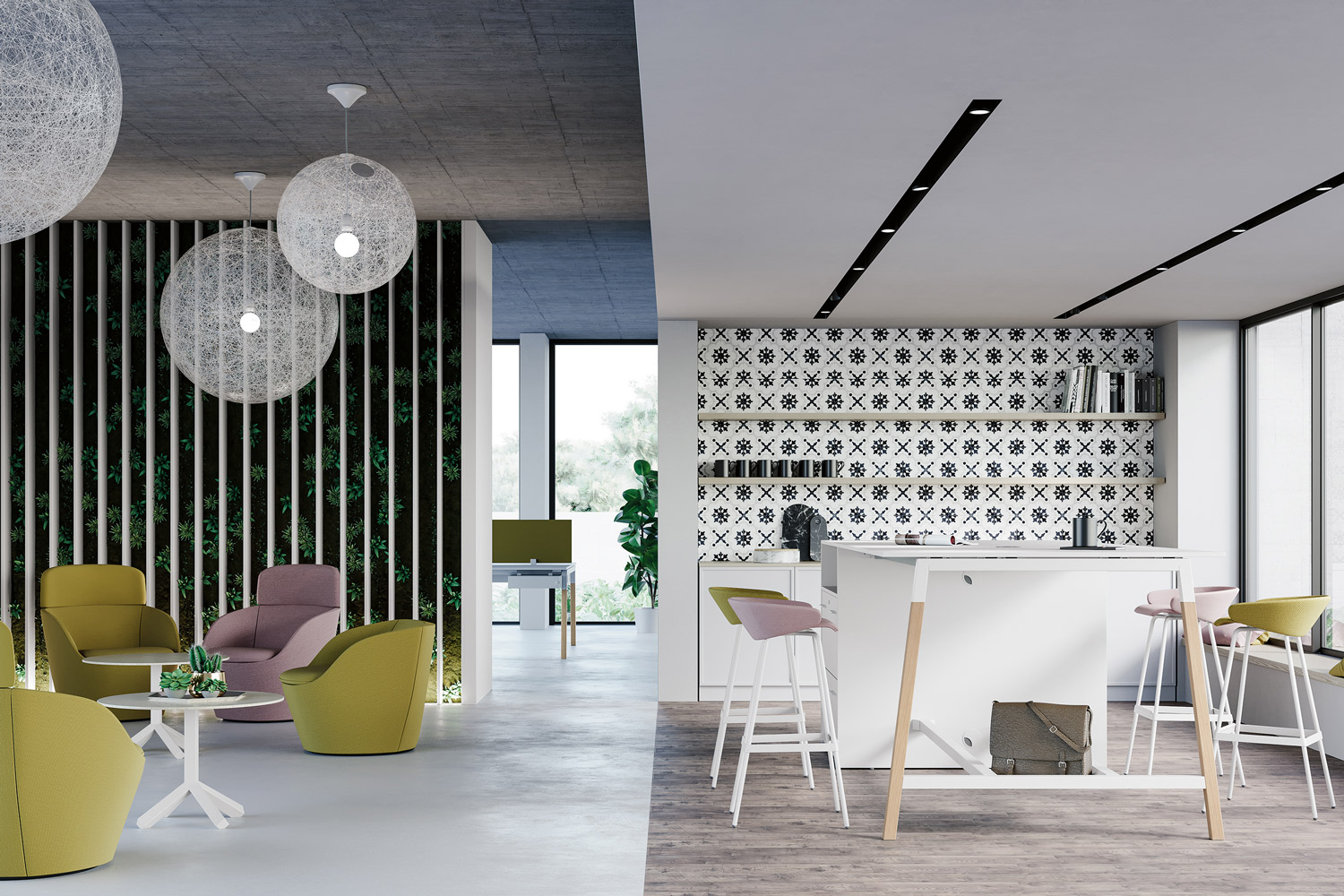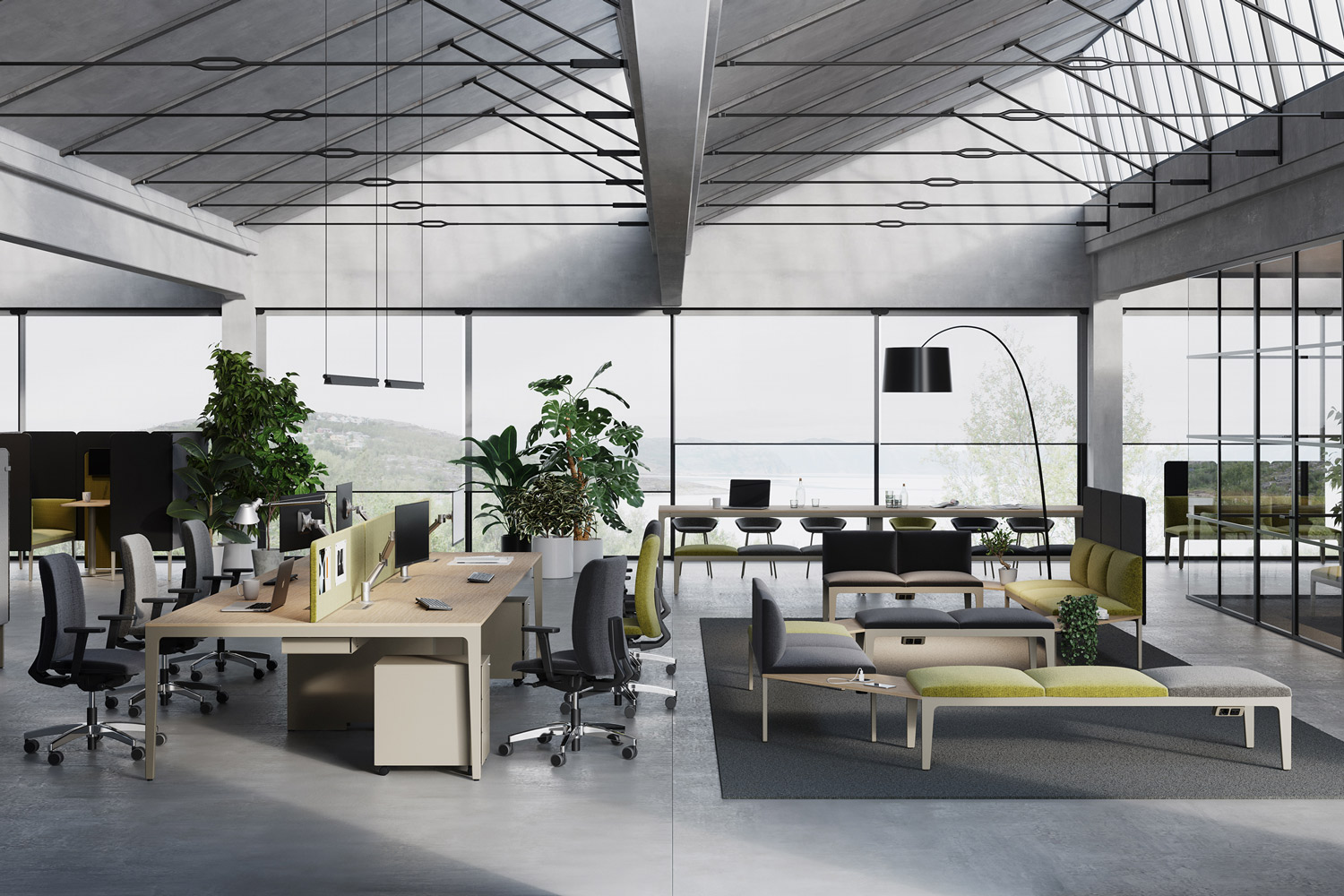Out of necessity rather than choice, 2020 was the year of home working. If all goes well, 2021 will see a gradual return to the company premises. The office will be the centre of working life again, but it won’t be the same as before, and there will be a new normality.
The focus for the new year will be to combine the best of both traditional and domestic worlds.
This also applies to the design field, by using technology to enhance and not replace human interaction and by focusing on opportunities to support employees, both virtually and in person.
The return of ‘revisited’ shared spaces
Direct contact with colleagues – according to recent surveys – is one of the most missed aspects by those who have switched to smart working, and represents a tangible value in direct human contact.
Open spaces, workstations for informal interaction, areas for group productivity, recreation and partner or collaborator meetings will regain an increasingly central role.
There will be more modular and flexible common spaces and ‘smart’ areas experienced at different times and in different groups, suitable for creating “constant moments of dialogue between those who are physically in the office and those who work remotely”.
The office will be the place for “working together”, while individual productivity hours could, at least partially, remain linked to smart working.
Hybrid models, such as what the Americans call hub&club, will become popular: home workstations and decentralised mini-offices in the suburbs for independent work, and large central head offices for collective work.
Safety first
Safety requirements in the workplace will still be a priority and reconciling them with the gradual return to sociability will be one of the challenges of office design.
This aspect will influence space planning decisions and will result in the creation of spacious and airy workplaces, which will be possible thanks to all the free space created by workstations of colleagues who have migrated to home working or desk-sharing.
The key words will be greater attention to the amount of people in the rooms and privacy, with the furniture undergoing an evolution in terms of individual protection.
Sanitised huddle rooms (small meeting rooms), canteens transformed into “smart canteens” and well-spaced workstations will find their place in dynamic and modular environments that can isolate momentary gatherings.

Adapting to working styles
The strategy must connect and unite remote, hybrid and on-the-job employees through virtual and physical places that encourage group membership.
Working styles can vary not only from person to person, but also change over the course of a day for a single person or an entire team. A corporate culture based on flexibility, target-aimed working and trust is needed to reorganise spaces.
Feeling at home
Bringing the comfort of home into the office will be another mission for office designers. The tranquillity of the home environment is cited as one of the top reasons for the satisfaction of smart workers, who would like to retain it when they return to the office. In other words offices will need: comfortable sofas and soft armchairs to place alongside the traditional office chairs, coffee break areas and lounge areas that instil tranquillity, colourful furnishings and environments that stand out from the traditional corporate grey, plants and green areas that mark and separate social and private areas.

Even greener and healthier
2021 will see even greener offices. The green wave that has been the leitmotif of interior design in recent years has certainly not died out; on the contrary it has merged with the need for healthy environments and with the opportunities offered by government policies that encourage investment in sustainability. The usual suggestions linked to nature (e.g. the use of wood, the creation of green areas) will be combined with smart technological solutions and latest generation materials to reduce emissions and environmental impact.
Ultimate goal: to recreate those connections between people in the office that were partly lost in 2020, thanks to an environment designed to improve well-being and productivity.

